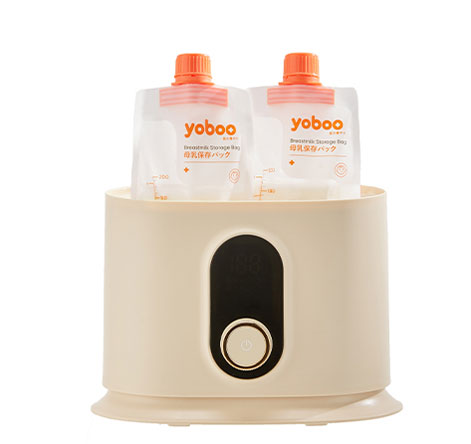Misconceptions and doubts about breastfeeding are the main reasons for low breastfeeding rates. To better understand the problems encountered in breastfeeding, let's learn together.
Breast engorgement (milk stasis)
Breast engorgement often occurs during postpartum confinement, and its symptoms are similar to those of a cold, including hardening of the breasts, fever, body soreness, and sweating.
During the week after giving birth, the breasts change from colostrum to mature milk. At this stage, the breasts are filled with milk, making breastfeeding difficult, leading to breast engorgement.
Usually, breast engorgement disappears within three days. When the breasts are swollen and the nipples become indented, it becomes even more difficult for babies to suckle.
To prevent breast engorgement, it is best for new mothers to use an electric breast milk pump to extract any excess milk from the breasts and allow their babies to suckle as soon as possible after birth. Breastfeeding during breast engorgement can easily cause breast injury, so it is recommended to massage the breasts for more than 20 minutes before breastfeeding or use hot compresses. To make it easier for the baby to suckle, it is best to first extract a little milk before breastfeeding.
If there is a lot of milk, a breast pump machine electric can be used to extract some of the milk first, and once the breast has become softer, the baby can be fed. After feeding, new mothers can use ice compress to reduce the risk of swelling.
Nipple pain
On the second to fourth day of breastfeeding, when the baby first sucks the nipple and areola into their mouth, the mother may feel some pain. If the baby can successfully extract breast milk, the pain will gradually disappear after 2-3 days.
If the pain persists after two days or if the breasts are always feverish and painful before or after breastfeeding, it is best to go to the hospital for examination.
Similarly, incorrect breastfeeding posture or methods can also cause nipple pain. During breastfeeding, the baby should open their mouth wide and take in the areola. Meanwhile, maintaining breast hygiene is important in daily life.
Nipple cracking
Nipple cracking is usually caused by the baby's suckling. If the mother persists in breastfeeding with cracked or ulcerated nipples, it will worsen and increase the pain, making it difficult to breastfeed for a period of time.
If it is too painful or inflamed to feed the baby, the baby can suckle on the other breast first.
When breastfeeding, change breasts every 5 minutes, and let the baby change positions slightly so that one breast is not stimulated too much.
If the baby bites the nipple while hungry, it is necessary to pay more attention during feeding. If the pain is severe, it is best to use an electric breast milk pump with multiple modes to extract milk and then feed the baby.
Breastfeeding is highly beneficial for babies, but mothers may sometimes suffer some discomfort. However, for the sake of the baby's health, the mother's pain is worth it.












